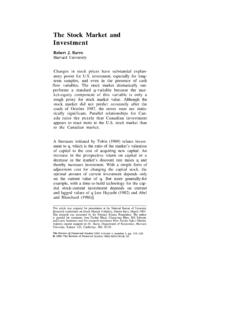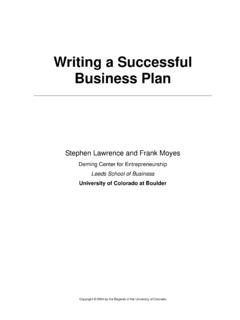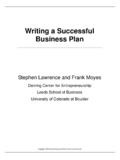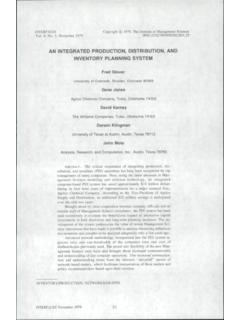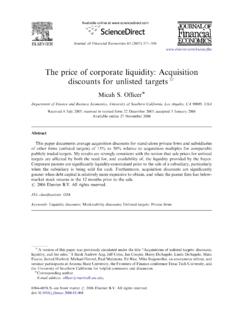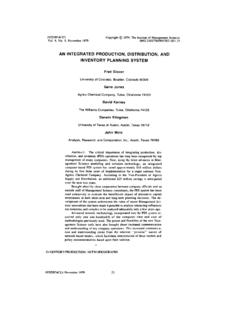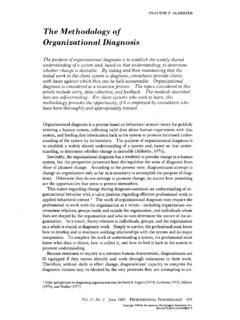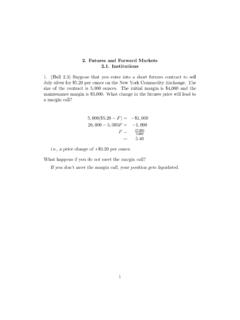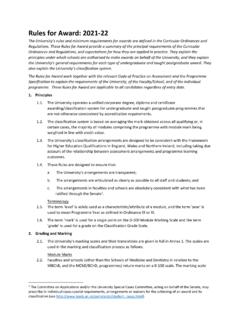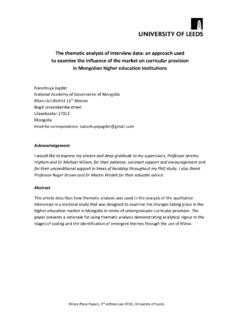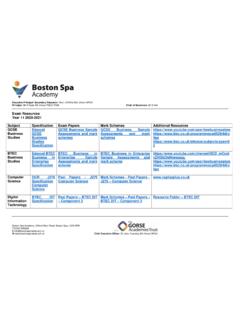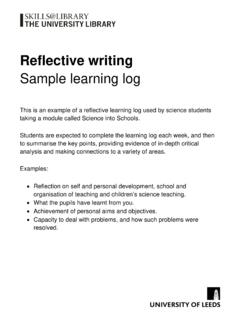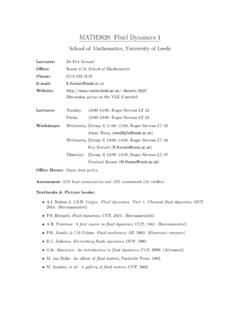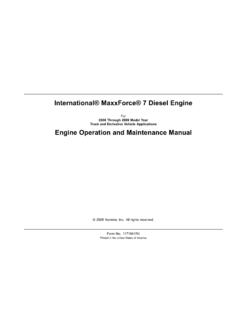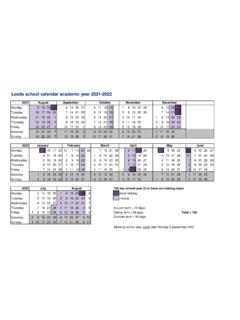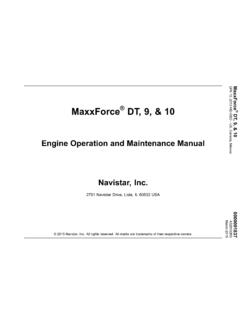Transcription of Feasibility Plan Framework - Leeds School of Business
1 Feasibility Plan Framework Frank Moyes and Stephen Lawrence Deming Center for Entrepreneurship Leeds School of Business 1 Feasibility Plan Framework 2003 Regents of the University of Colorado August 2003 University of Colorado Boulder Feasibility Plan Framework Introduction A Feasibility plan asks two questions of a potential venture Will anyone buy the product or service? Can it make a profit? While the questions are straightforward, the answers are anything but. These two simple questions quickly lead you to a raft of others that you will address in the following sections: Opportunity or need Product/Service description Target market Unique benefits Competitive analysis Sustainable competitive advantage?
2 Risks Profitability, break-even and investment required Conclusions Recommendations For high-tech ventures there is a third question that needs to be addressed - will the product/service actually work as designed. Determining the technical Feasibility is not within the direct scope of this Feasibility Plan. Venture Description Provide a brief description of the Business . What products or services are being offered? Where is it located? You should not assume that the reader is familiar with your product/service, so be sure to explain and describe it carefully.
3 Opportunity/Need 1. Describe the market opportunity. What trends are favorable to the venture? Is the market growing? 2. Estimate the market potential ($, customers, units, transactions, etc.). 3. Describe the market structure. Is it fragmented or dominated by large players? What channels exist and are they accessible? Are there barriers to entry? It may be useful to consider the value chain? 4. Describe the compelling need for the product/service? What problem is being solved? 2 Feasibility Plan Framework 2003 Regents of the University of Colorado August 2003 5.
4 Consider the following needs when analyzing the product/service. It is not necessary for a product /service to address all of these. Physical: food, warmth, shelter, sleep, etc. Physiological: health, cleanliness, comfort, fitness, safety, etc. Emotional: euphoria, love, prestige, stress, etc Social: ethical, honesty, power, competitiveness, integrity, friendship, etc. Intellectual: achievement, better decisions, artistry, etc. Economic: revenues, productivity, cost savings, maintenance, etc. Financial: ROI, DCF, payback, burn rate, etc.
5 Product or Service 1. Describe the product or service. Consider the following product attributes ( Boyd, Walker and Larreche, Marketing Management 1995, Irwin Publishing)? Performance: durability, quality of materials, defect levels, tolerances, construction, dependability, functional performance (acceleration, nutrition, taste), efficiency, safety, styling, packaging, etc. Cost: purchase price, quantity discounts, operating costs, repair costs, cost of extras or options, cost of installation, trade in allowance, likely resale value, etc.
6 Availability: carried by local stores, credit terms, quality of service available from local dealer, delivery time, credit card, on-line transactions, etc. Social: status, image, popularity with friends, popularity with family members, reputation of brand, style, fashion, etc. Service: hours, warrant, guarantee, return/replacement policy, upgrades, maintenance, training, installation, repair service, spare parts, customer support, tech support, training, product design, make to order, level of inventory, quotation response time, lead time, quality certification, employee capabilities, etc.
7 Environment: location, atmosphere, layout, fixtures, aesthetics, style, sound, lighting, color, etc. 2. What range of product/services is being offered? What are the prices? Describe the environment (size, d cor and layout, etc.). If it is a service Business , what are the employee requirements (qualifications, number, dress, etc.)? 3. Describe how your product is designed to meet the needs of your target customer. 4. What is the revenue model? 3 Feasibility Plan Framework 2003 Regents of the University of Colorado August 2003 5.
8 How will the product/service be produced and delivered? 6. For technology products, what are the major technical milestones that must be achieved? What is the basis for believing that they are achievable? Target Market Most ventures address either a consumer market or a Business market. The motivations of each are different. If the product/service is sold through a distribution channel, system integrator or OEM, consider both. Consumer market 1. Characterize the target market according to the following criteria: Demographics (gender, sex, age, race, education, occupation or profession, income, location, etc) Psychographics or life style (attitudes, beliefs, opinions, interests, values, etc.)
9 Social status (infers certain behavior: middle class values education, family activities, etc.) 2. What does the target market think about the product/services currently in the marketplace? How willing are they to change? 3. What distribution is required to reach the consumer? 4. How are buying decisions made? Who makes the decision? Who influences the decision? Are buying decisions based primarily on price, quality, service, convenience, or others? Is there repeat Business ? Business market 1. Describe the organizations that purchase the product/service.
10 What industry or sector, automotive, state governments, nonprofit? What size, Fortune 100, number of employees, Where located? 2. What does the target market think about the product/services currently in the marketplace? How willing are they to change? 3. How are buying decisions made? Are there different approval levels? Are decisions made centrally or decentralized? At what level is the ultimate responsibility for approving expenditures? What is the budgeting cycle? How long does it take from the first contact to receipt of an order?
